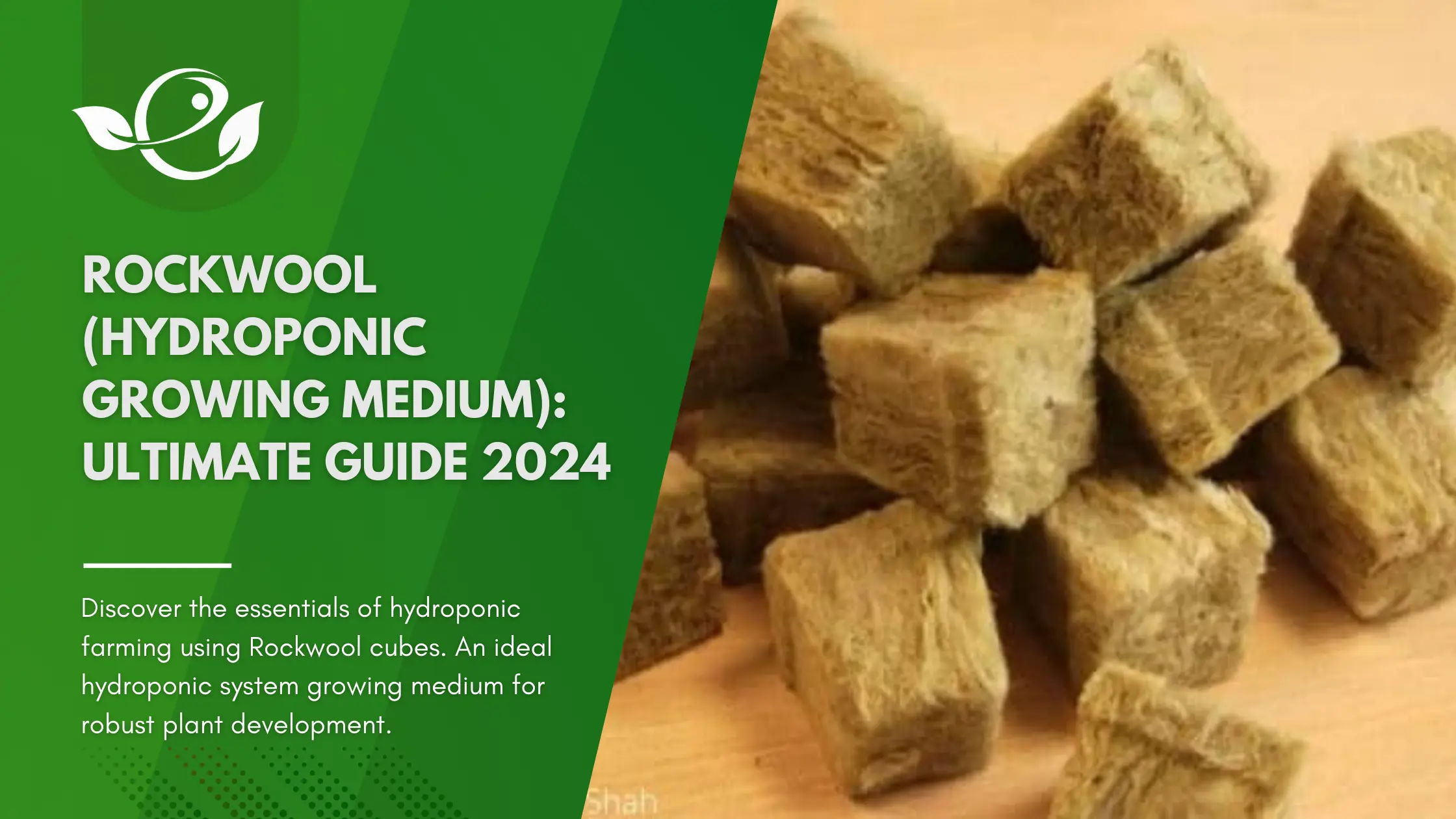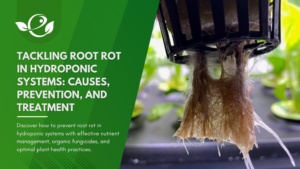Table of Contents
Did you know that hydroponic farming can produce up to three times the yield of traditional soil-based agriculture? With the global population on the rise and arable land becoming scarce, hydroponics offers a sustainable solution for efficient crop production. At the heart of this innovative farming method lies a key component – Rockwool cubes.
What are Rockwool ?
Rockwool cubes are specially designed growing mediums used in hydroponic farming systems. Made from mineral fibres, primarily basalt rock and chalk, Rockwool cubes provide an ideal environment for the healthy development of plants.
These cubes are commonly used by hydroponic farmers due to their excellent water retention and aeration properties. Rockwool cubes are porous, allowing for proper drainage and oxygenation of the plant’s root system.
It come in different sizes and shapes, making them versatile for various hydroponic setups. They can be used for starting seeds, cloning cuttings, or transplanting seedlings. The cubes provide stability and support for the plants while allowing the roots to access water, oxygen, and nutrients.
In addition to their physical properties, Rockwool cubes are also pH neutral, ensuring that the nutrient solution used in hydroponic farming remains stable and balanced.
“Rockwool cubes are a game-changer for hydroponic farmers. They provide a reliable and effective medium for plant growth, allowing us to optimize nutrient delivery and promote healthy root development.”
– Michael Thompson, Hydroponic Farmer
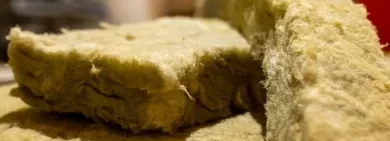
A. Composition of Rockwool
This is made through a process of melting basalt rock and chalk, and then spinning the molten mixture into fibres. These fibres are then combined and compressed to form blocks or cubes.
The composition of these cubes provides several benefits for hydroponic farming:
- Water retention: The porous structure of cubes allows them to hold water while providing adequate drainage, preventing waterlogged roots.
- Aeration: The open pore structure ensures good airflow to the root zone, promoting healthy root growth and preventing oxygen deprivation.
- pH stability: Rockwool cubes are pH neutral, which means they do not interfere with the nutrient solution’s pH level, providing a stable environment for nutrient uptake.
- Root support: The structure of cubes provides stability for the plant roots, allowing them to anchor and spread while absorbing water and nutrients.
Overall, Rockwool cubes offer hydroponic farmers a reliable and effective growing medium for optimizing plant growth and achieving higher yields.
Advantages of using Rockwool cubes in hydroponic farming
Rockwool cubes are a popular choice as a growing medium in hydroponic farming due to their numerous advantages. These cubes are specifically designed to provide an optimal environment for plant growth and offer several benefits that contribute to successful hydroponic cultivation.
A. Retains Moisture for Healthy Plants
One of the key advantages is their exceptional ability to retain moisture. The fibres act as tiny reservoirs, holding water and nutrients for the plant roots. This unique characteristic ensures that plants have a constant supply of moisture, promoting healthy growth and reducing the risk of dehydration. As a result, hydroponic farmers can maintain consistent moisture levels, ensuring a thriving crop.
B. Provides Excellent Aeration
Another noteworthy advantage of Rockwool cubes is their excellent aeration properties. The porous structure allows for the easy exchange of air and oxygen between the roots and the surrounding environment. This promotes optimal root respiration, enhancing nutrient uptake and overall plant health. With improved oxygenation, plants grown in cubes are less susceptible to root diseases and can develop stronger, healthier root systems.
The combination of moisture retention and aeration in Rockwool cubes creates an ideal growing environment for plants, resulting in faster growth rates and higher yields in hydroponic farming.
C. Encourages Healthy Root Development
Rockwool cubes provide an ideal substrate for root development in hydroponic systems. The fibrous structure promotes strong and healthy root growth by providing a supportive yet penetrable medium for roots to expand. This encourages the development of an extensive root system, enabling plants to efficiently absorb water and nutrients for optimal growth and productivity.
The advantages of using Rockwool cubes in hydroponic farming make them an excellent choice for hydroponic growers looking to maximize their crop yield and ensure healthy plant development.
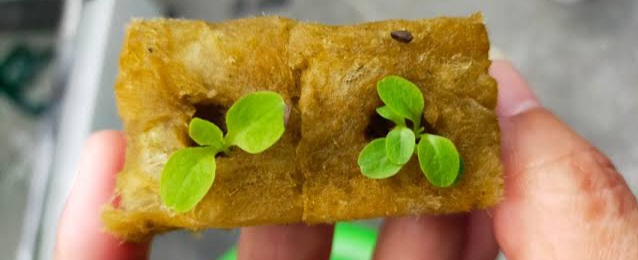
How to prepare Rockwool cubes for hydroponic farming
Getting your cubes ready for hydroponic farming is an essential step to ensure the success of your crops. By following these step-by-step instructions, you can prepare your cubes for optimal plant growth in a hydroponic system.
- Rinse the Rockwool cubes: Start by rinsing the cubes with clean water. This helps remove any loose fibres or debris that might interfere with the root development of your plants.
- Soak the Rockwool cubes: After rinsing, place the cubes in a container filled with pH-balanced water. Allow the cubes to soak for approximately 1-2 hours. This process ensures that the cubes are fully saturated with water, providing a moist environment for your plant roots.
- Balance the pH level: It’s crucial to maintain the correct pH level for your hydroponic system. Test the pH level of the soaking water and adjust it if necessary. The ideal pH range for most hydroponic crops falls between 5.5 and 6.5. Use pH-balancing solutions to bring the water within this range before continuing.
Once you have completed these steps, your Rockwool cubes are ready to be used as a growing medium in your hydroponic farming system. The cubes will provide excellent water retention and aeration properties, ensuring optimal conditions for your plants to thrive.
Remember to always follow the manufacturer’s instructions when working with Rockwool cubes, as different brands may have specific guidelines for preparation and usage.
Pro Tip: Before planting your seeds or seedlings in the Rockwool cubes, make sure they are properly drained to prevent waterlogging. Excess water can lead to root rot and poor plant health.
Example Table: pH Balancing Solutions
| Solution | Benefits |
|---|---|
| pH Up | Raises pH levels in acidic water to a more neutral range. |
| pH Down | Reduces pH levels in alkaline water to a more neutral range. |
| pH Buffer | Maintains a stable pH range in hydroponic systems, preventing fluctuations. |
Using Rockwool in a hydroponic system
When it comes to hydroponic farming, Rockwool cubes serve as an ideal growing medium for plants. Their unique properties make them a popular choice among hydroponic farmers worldwide. In this section, we will discuss the practical aspects of using these cubes within a hydroponic system, including planting methods, spacing requirements, and maintenance guidelines for optimal plant growth.
A. Planting Seeds or Seedlings:
To begin, it is crucial to properly plant seeds or seedlings in Rockwool cubes. Start by creating a small hole in the cube using a pencil or your fingers. Gently insert the seed or seedling into the hole and cover it with Rockwool, ensuring contact between the plant and the cube. This method promotes direct root growth and accelerates plant establishment.
B. Spacing:
Proper spacing is essential in a hydroponic system to allow each plant ample room for growth. Consult the specific plant’s spacing requirements and adjust accordingly. Leave enough space between each cube, allowing for air circulation and preventing overcrowding that can impede plant development.
C. Maintenance:
Maintaining Rockwool cubes in a hydroponic system is relatively straightforward. Constantly monitor the moisture level of the cubes, ensuring that they are adequately hydrated but not waterlogged. Regularly check the nutrient solution’s pH level and adjust it as needed to maintain a balanced growing environment. Additionally, inspect the cubes for any signs of pests or diseases, taking immediate action to prevent their spread.
“Rockwool cubes are a game-changer in hydroponic farming. Their ability to provide the perfect balance of moisture and aeration is unmatched. I’ve witnessed remarkable growth and yields since incorporating Rockwool into my hydroponic system.” – Sarah Rodriguez, hydroponic farmer
Next, we’ll explore how these cubes facilitate nutrient delivery in hydroponic farming, ensuring plants receive the essential elements they need for optimal development.
Nutrient delivery in hydroponic farming with Rockwool cubes
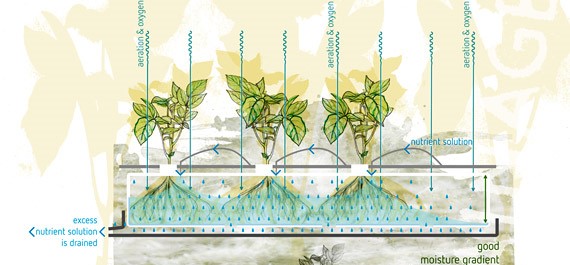
In hydroponic farming systems, these cubes play a crucial role in facilitating efficient nutrient delivery to plants. The nutrient solutions used in hydroponics provide essential elements for plant growth, and the cubes serve as the medium through which these nutrients are absorbed by the plant roots.
Rockwool, made from spun mineral fibres, offer excellent water retention properties while also providing ample oxygenation to the root zone. This enables plants to access the necessary water and oxygen required for optimal nutrient uptake and utilization.
Rockwool cubes, being pH-neutral, ensure that the nutrient solutions maintain their intended pH levels, preventing any potential acidity or alkalinity imbalances that could hinder nutrient absorption.
Proper nutrient delivery is essential for healthy crop development in hydroponic farming. By understanding the importance of nutrient solutions and utilizing Rockwool cubes as the growing medium, hydroponic farmers can create an optimal environment for plant growth.
When administering nutrient solutions in a hydroponic system using Rockwool cubes, it is essential to follow proper practices to maximize nutrient availability to plants. Here are some key considerations:
- Select nutrient solutions that are specifically formulated for hydroponic farming, ensuring that they contain a balanced mix of essential macro and micronutrients.
- Closely monitor the nutrient solution’s pH levels and make necessary adjustments to maintain the optimal range for plant absorption.
- Regularly check the electrical conductivity (EC) of the nutrient solution to ensure that it falls within the desired range, indicating the appropriate concentration of nutrients.
- Follow the recommended feeding schedule and adjust it based on the plant’s growth stage and specific nutrient requirements.
- Ensure that the Rockwool cubes remain adequately moist to allow for effective nutrient absorption by the plant roots.
By understanding the intricate relationship between Rockwool cubes, nutrient solutions, and plant growth, hydroponic farmers can maximize the potential of their crops and achieve excellent yield and quality outcomes.
Troubleshooting common issues with Rockwool in hydroponics
While using Rockwool cubes as a growing medium in hydroponic farming offers numerous benefits, it’s essential to be aware of common issues that may arise. By understanding how to troubleshoot these problems, hydroponic farmers can ensure the success and productivity of their crops.
1. pH Imbalance
A pH imbalance in the nutrient solution can impact plant growth and nutrient uptake in hydroponic systems. If the pH level is too high or too low, it can result in nutrient deficiencies or toxicities. To troubleshoot this issue:
- Regularly monitor the pH level of the nutrient solution with a pH meter or test kit.
- Adjust the pH using pH up or pH down solutions to bring it within the optimal range for the specific crop being grown.
- Ensure the pH of the water used for nutrient solution preparation is also within the correct range.
2. Nutrient Deficiencies
The cubes alone provide limited nutrients to plants, so nutrient deficiencies can occur if the nutrient solution is not properly balanced. To troubleshoot nutrient deficiencies:
- Identify the specific nutrient(s) lacking by observing the plant’s symptoms. Common deficiencies include nitrogen (N), phosphorus (P), potassium (K), iron (Fe), and magnesium (Mg).
- Adjust the nutrient solution by adding the necessary fertilizers to meet the plant’s requirements.
- Regularly monitor nutrient levels to maintain the correct balance for optimal plant growth.
3. Root Diseases
Poor root health can lead to plant stress and susceptibility to diseases. In hydroponic systems, root diseases can occur due to improper sanitation, high humidity, or overwatering. To troubleshoot root diseases:
“Healthy roots are the foundation of a thriving hydroponic system. By maintaining good hygiene practices and providing proper moisture levels, the risk of root diseases can be minimized.”
- Ensure proper sterilization of equipment, including tools and growing containers, to prevent the spread of pathogens.
- Maintain appropriate humidity levels to prevent excessive moisture, which can contribute to fungal growth.
- Avoid overwatering by providing adequate drainage and allowing the growing medium to slightly dry between watering cycles.
- If root diseases occur, consider using suitable fungicides or beneficial microorganisms to combat the pathogens.
By addressing these common issues in hydroponic farming, farmers can maintain the health and productivity of their crops when using Rockwool cubes as a growing medium.
Rockwool cubes and sustainable hydroponic farming
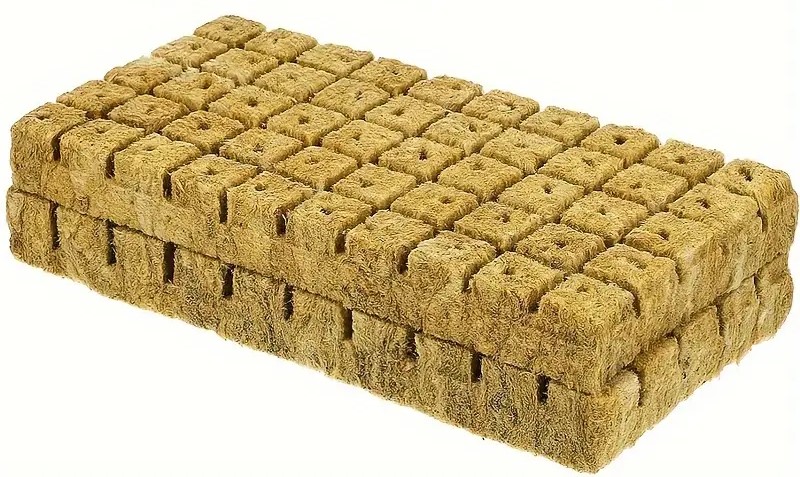
When it comes to hydroponic farming, sustainability is a key consideration. These cubes offer an eco-friendly solution that promotes resource-efficient cultivation practices. These cubes can be reused and recycled, making them a sustainable choice for hydroponic farmers. Rockwool, a mineral wool made from natural volcanic rock, is an ideal growing medium for hydroponic systems. It provides a stable and favourable environment for plant roots, allowing them to absorb water and nutrients efficiently. This results in healthier plants and increased crop yields.
In addition to being reusable, These cubes are also recyclable. At the end of their lifespan, these cubes can be crushed and repurposed for various applications. This minimizes environmental impact and contributes to a circular economy.
By using Rockwool cubes in hydroponic farming, growers can reduce their reliance on traditional soil-based agriculture. This leads to conservation of land and water resources, as hydroponic systems use significantly less water and require smaller growing spaces. It also eliminates the need for harmful pesticides, making hydroponic farming with Rockwool cubes a safer and more sustainable alternative.
To illustrate the sustainable benefits of using Rockwool, let’s take a look at the following table:
| Benefits of Rockwool Cubes in Hydroponic Farming |
|---|
| 1. Reusability |
| 2. Recyclability |
| 3. Conservation of land and water resources |
| 4. Elimination of harmful pesticides |
Conclusion
Rockwool cubes are an excellent choice as a growing medium in hydroponic farming systems. They provide optimal conditions for plant growth and development, making them highly suitable for hydroponic farmers.
By using these cubes, hydroponic farmers can ensure robust plant growth due to the cubes’ ability to retain moisture and provide excellent aeration. This allows for healthy root development and optimal nutrient absorption, leading to productive and healthy crops.
Furthermore, Rockwool cubes contribute to sustainable cultivation practices. They can be reused and recycled, making them an environmentally friendly choice for hydroponic farming. Additionally, their use in hydroponic systems reduces the need for soil, minimizing land use and preserving natural resources.
In conclusion, Rockwool cubes are a reliable and efficient growing medium for hydroponic farming. Their ability to provide optimal growing conditions for plants, combined with their sustainability benefits, makes them a valuable choice for hydroponic farmers seeking robust plant development and environmentally friendly cultivation practices.
FAQ
1. What are the advantages of using Rockwool cubes in hydroponic farming?
Rockwool cubes offer several advantages in hydroponic farming. They provide excellent water retention, ensuring plants have access to moisture at all times. They also promote proper aeration, allowing oxygen to reach the roots. Additionally, Rockwool cubes facilitate healthy root development by providing a stable and supportive structure for the plants.
2. How do I prepare Rockwool cubes for hydroponic farming?
To prepare the cubes, start by rinsing them thoroughly with water to remove any initial debris. Then, soak the cubes in a pH-balanced nutrient solution for a few hours or overnight. This process ensures that the cubes are properly hydrated and ready for planting.
3. How do I use Rockwool cubes in a hydroponic system?
When using Rockwool cubes in a hydroponic system, plant your seeds or seedlings in the pre-prepared holes or depressions on the top surface of the cubes. Ensure proper spacing to allow for plant growth. Once planted, maintain the appropriate nutrient solution and monitor the moisture levels to support healthy plant development.
4. What are some common issues with Rockwool cubes in hydroponic farming and how can I troubleshoot them?
Common issues with Rockwool cubes in hydroponic farming include pH imbalance, nutrient deficiencies, and root diseases. To troubleshoot these issues, regularly test and adjust the pH levels of the nutrient solution, ensure proper nutrient balance, and maintain good hygiene practices to prevent the spread of diseases. Consulting with hydroponic experts can also provide guidance in addressing specific challenges.
